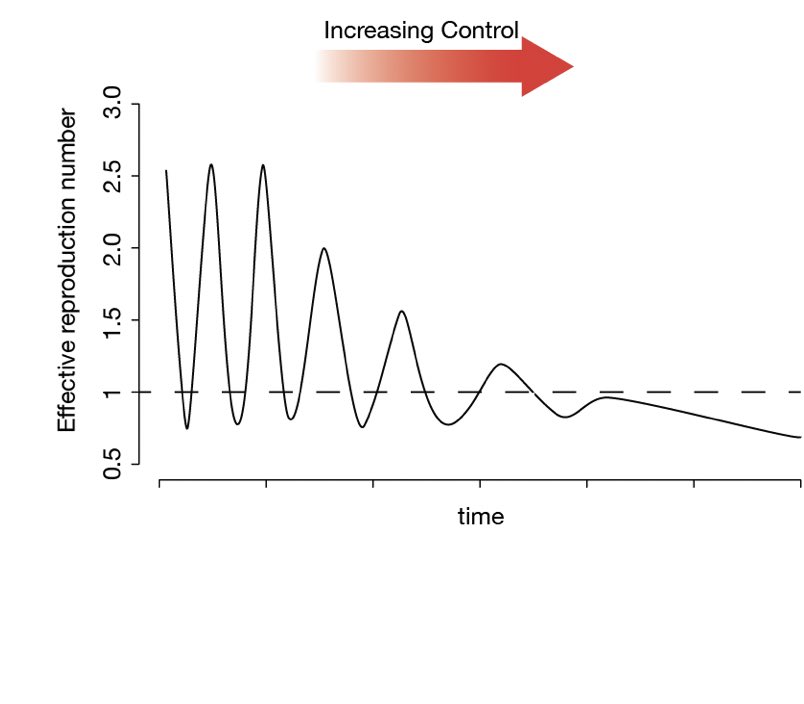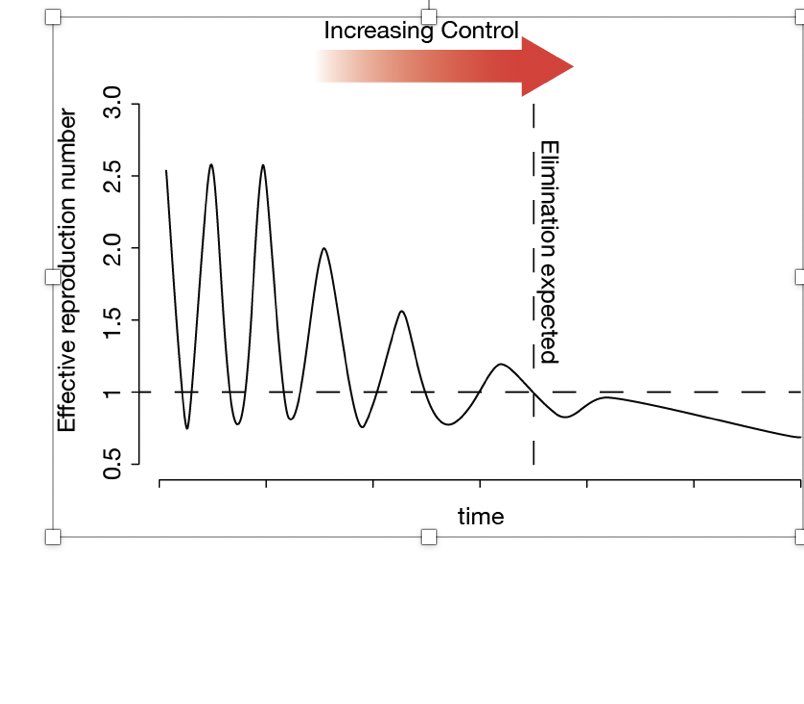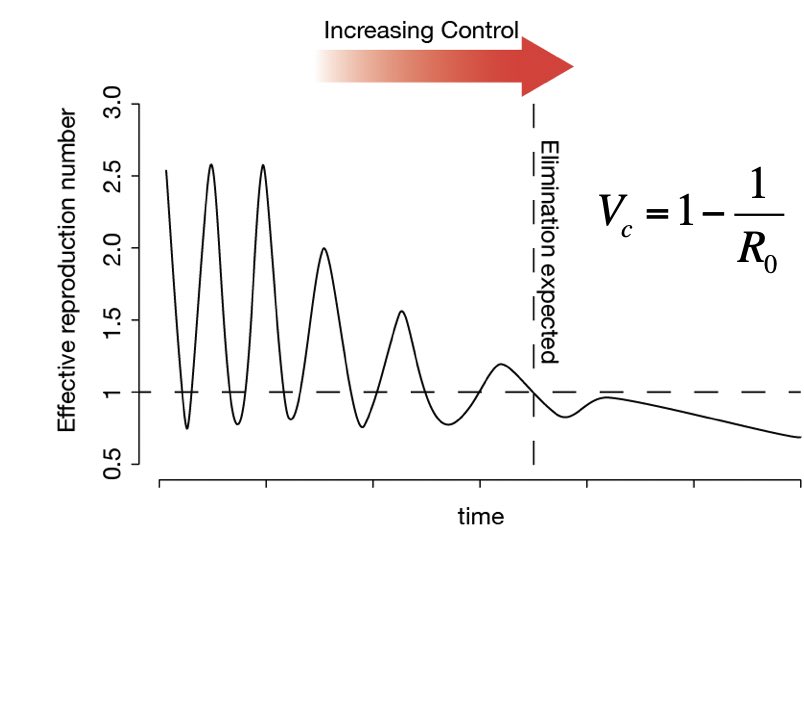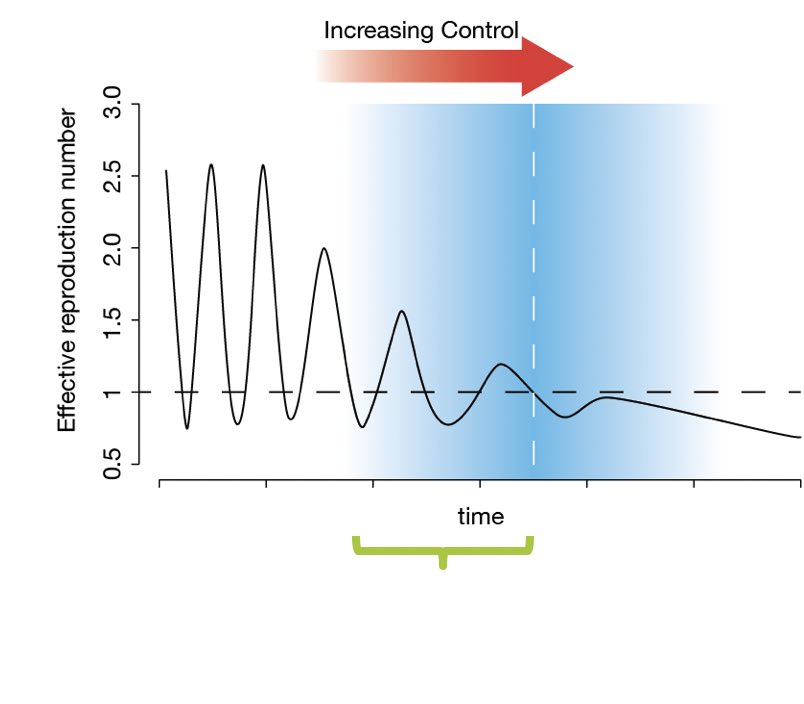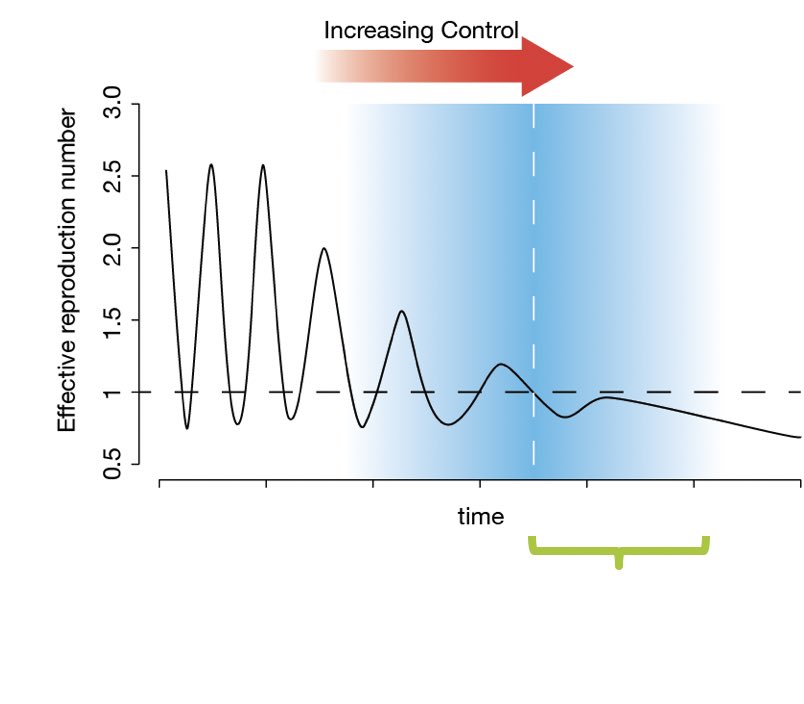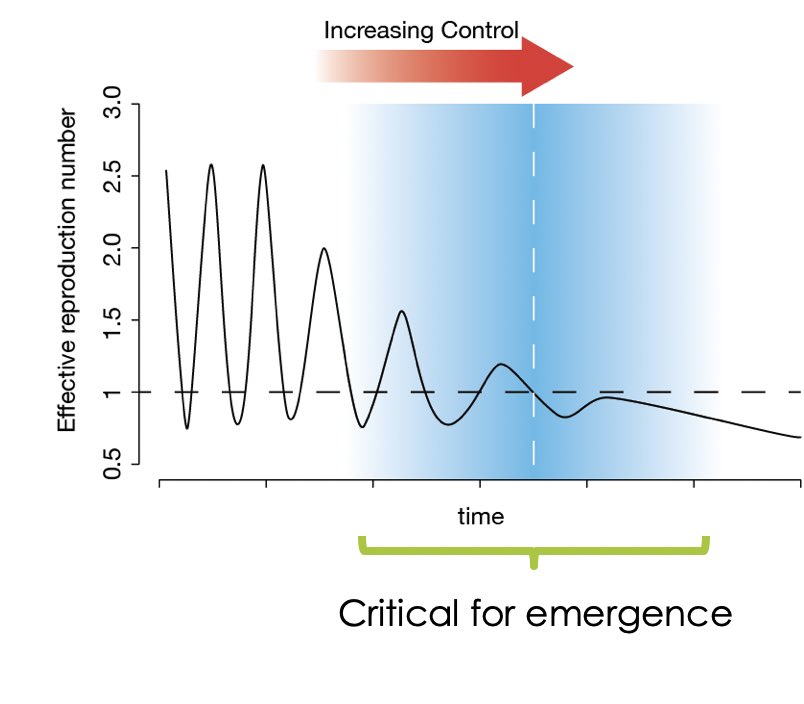Been reflecting on these slides from 2015 on the uncertainty of elimination - populations are rarely in a infection free regime – dynamics are described by “effective reproduction number” (R) that may fluctuate above and below 1 for various reasons 1/
Models predict elimination at R<1 (herd immunity threshold), which in practice is a function of the pathogen AND the population -- depends on birth rate, contact rate, controls and interventions 2/
Models and comparative analysis (e.g. what happened elsewhere or for similar viruses) can help put bounds on where that threshold might be, but empirical verification is difficult until elimination is observed 3/
Prior to R<1 you can still observe elimination because randomness may drive cases to 0, which means absence of cases but not absence of risk. So you think you’re safe, but won’t know until a resurgence. 4/
You might see persistence even after R<1 because of transient dynamics (transmission doesn’t stop instantly!) or persistence in local areas with less effective control and reinfection due to movement. 5/
So on either end of the elimination threshold there is uncertainty due to local conditions and even comparative analysis has to take context into account to explain observation relative to expectation 6/
So while a useful concept, a deterministic elimination threshold (i.e. HIT) is challenging to translate into fine-scale operational goals. What we need is an operational understanding of the dynamics in this blue region of uncertainty to tell us how much further we have to go 7/
My colleague @drake_lab at @ceid_uga has led some really excellent work in this area using a concept from physics called “critical slowing down” to develop surveillance measures that get stronger the closer you get to the threshold. 8/ https://doi.org/10.1371/journal.pcbi.1006917">https://doi.org/10.1371/j...
That work was mostly focussed on emergence, but in principle still holds for tracking progress to elimination. Elimination is not just emergence in reverse … but some useful principles still hold. 9/
The location of the threshold is uncertain but rather than assume you know what you dont, you can build early warning systems that signal your proximity to the threshold. Here we want alerts that it is safe to remove restrictions and we want them to get louder the safer it is 10/
Though programmatically challenging to communicate and implement, these context-dependent rules signal ramping up or ramping down of control that can respond to an unanticipated future (e.g. behavioral/technological/policy changes) 11/
The overused saying in the elimination game is “No plan survives first contact with the enemy” Helmuth von Moltke … we’re not moving the goalposts … they’re moving on their own and its for us to react accordingly /x

 Read on Twitter
Read on Twitter